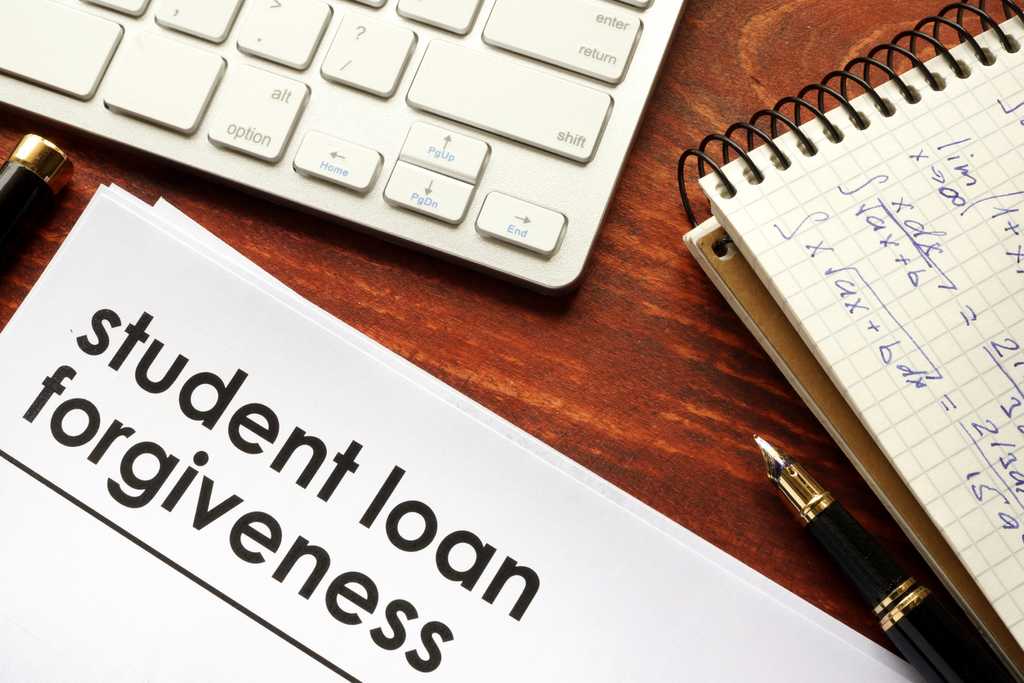In August 2022, the Biden Administration announced its long-awaited student loan forgiveness program which gives up to $10,000 of student loan relief for individuals making less than $125,000 per year. However, there has been a flurry of court activity, particularly from Republican-led states seeking to block the administration’s student loan forgiveness program. Currently, an injunction is preventing the U.S. Department of Education from accepting or processing student loan forgiveness applications.
Here’s what you need to know about student loan forgiveness and if you can still apply.
What is happening with student loan forgiveness?
The Biden Administration’s student loan forgiveness program provides up to $10,000 in student loan cancellation to individuals and up to $20,000 in debt cancellation to Pell Grant recipients with loans held by the Department of Education. Student loan forgiveness is subject to income limits; only borrowers with individual incomes less than $125,000 ($250,000 for married couples) qualify for student loan forgiveness.
In response to the administration’s initiative, a number of parties filed lawsuits seeking to block the program. The most notable lawsuit was brought on behalf of six Republican-led states, Missouri, Iowa, South Carolina, Nebraska, Arkansas and Kansas. As of November 14th, a panel of three judges on the 8th Circuit Court of Appeals has issued an injunction preventing student loan forgiveness.
The Biden administration has filed an appeal with the U.S. Supreme Court and has extended its pause on student loan repayments until either June 30, 2023 or until the Supreme Court makes a ruling.
How do I know if I qualify for student loan forgiveness?
Under the Biden Administration’s student loan forgiveness plan, you qualify for up to $10,000 of federal student loan forgiveness if you:
- Hold federal student loans that were disbursed before June 30, 2022.
- Earned less than $125,000 annually (or $250,000 per household) in either tax year 2020 or 2023, based on your Adjusted Gross Income (AGI.)
Pell Grant recipients are eligible for up to $20,000 in debt forgiveness.
The program only applies to federal student loans. Only the following eligible loans qualify for forgiveness:
- William D. Ford Federal Direct Loans (Direct Loans).
- Federal Family Education Loan (FFEL) Program loans held by the U.S. Department of Education or in default at a guaranty agency.
- Federal Perkins Loan Program loans held by the U.S. Department of Education.
- Defaulted loans, including U.S. Department of Education-held or commercially serviced Subsidized Stafford, Unsubsidized Stafford, parent PLUS, graduate PLUS, and Perkins loans held by the Department of Education.
Some consolidation loans are also eligible, provided that all underlying loans were qualifying federal loans. Private loans are not eligible for debt relief. Additional information on eligibility requirements can be found at the Federal Student Aid website.
Can I still apply for student loan forgiveness now?
The 8th Circuit Court of Appeals has issued an order blocking the Biden Administration’s student debt relief plan. Because of this, the U.S. Department of Education is not currently accepting or processing applications for student loan forgiveness. The department has filed an appeal with the U.S. Supreme Court seeking to overturn the court’s injunction blocking its student loan forgiveness program.
Until the injunction blocking the student debt relief is either lifted by the 8th Circuit Court of Appeals or overturned by the U.S. Supreme Court, you cannot apply for the Biden Administration’s student loan forgiveness program.
What you can do now
Even though you cannot currently apply for student loan forgiveness, if you think you are eligible for student loan forgiveness, the best thing you can do is stay informed.
The U.S. Department of Education offers email newsletters and advises people seeking student loan debt relief to subscribing to its newsletters. Here are the recommended newsletters you should subscribe to for updates on student loan forgiveness:
- Federal Student Loan Borrower Updates
- Top News from the Department
Second, you can monitor the U.S. Department of Education’s student loan forgiveness application page. If the court orders blocking the administration’s student debt relief program are overturned, information will be posted at that location.
Alternatives to the Biden Administration’s student loan forgiveness program
The Biden Administration’s student loan forgiveness program isn’t the only way that you might be able to get your student loans forgiven or discharged. The U.S. Department of Education offers several student loan forgiveness programs for people working for government agencies, at non-profits, in low-income schools, or based on other qualifying criteria.
Here are the student loan forgiveness and discharge programs offered by the Department of Education. If you think you may be eligible under one of these programs, visit the Federal Student Aid website for more information.
- Public Student Loan Forgiveness: Forgives the remaining balances on your Direct Loans after making 120 qualifying monthly payments while working full-time for a qualifying government or not-for-profit organization.
- Teacher Loan Forgiveness: If you teach full-time for five complete and consecutive academic years in a low-income school, you may be eligible for up to $17,500 of forgiveness.
- Closed School Discharge: The Department of Education may discharge your federal student loan if your school closes while you’re enrolled or soon after you withdraw.
- Perks Loan Cancelation and Discharge: You might be able to have your Perkins Loan canceled based on employment or volunteer service.
- Total and Permanent Disability Discharge: If you are totally and permanently disabled, you might qualify for a discharge of your federal student loans.
- Discharge Due to Death: If a student loan borrower, or if a student on behalf of whom a PLUS loan was taken out dies, their federal student loans may be discharged.
Even if you would qualify for student loan forgiveness under the Biden Administration’s program, you should apply for one of these student loan forgiveness programs if you are eligible.
You can also refinance your student loan before interest rates go up further. Splash Financial, a leading student loan refinancing marketplace and technology platform that partners with credit unions and banks to help consumers save money on their student loans, has helped hundreds of borrowers manage their student loans.
For now, wait and see
The Biden Administration’s student loan debt relief program is currently blocked. As of publication time, an injunction from the 8th Circuit Court of Appeals prevents the Department of Education from accepting new applications, processing existing applications or providing student loan forgiveness.
If you believe you qualify for student loan forgiveness, the best course of action is to stay informed by subscribing to the U.S. Department of Education’s newsletters, monitoring the news surrounding the student loan forgiveness program, and checking to see if you are eligible for any of the Department of Education’s other student loan cancellation or discharge programs.

